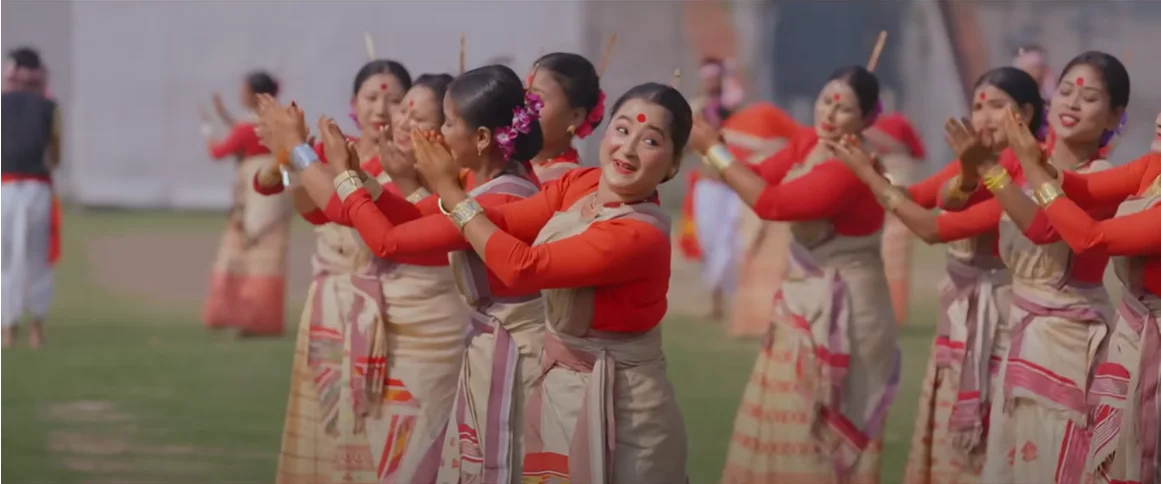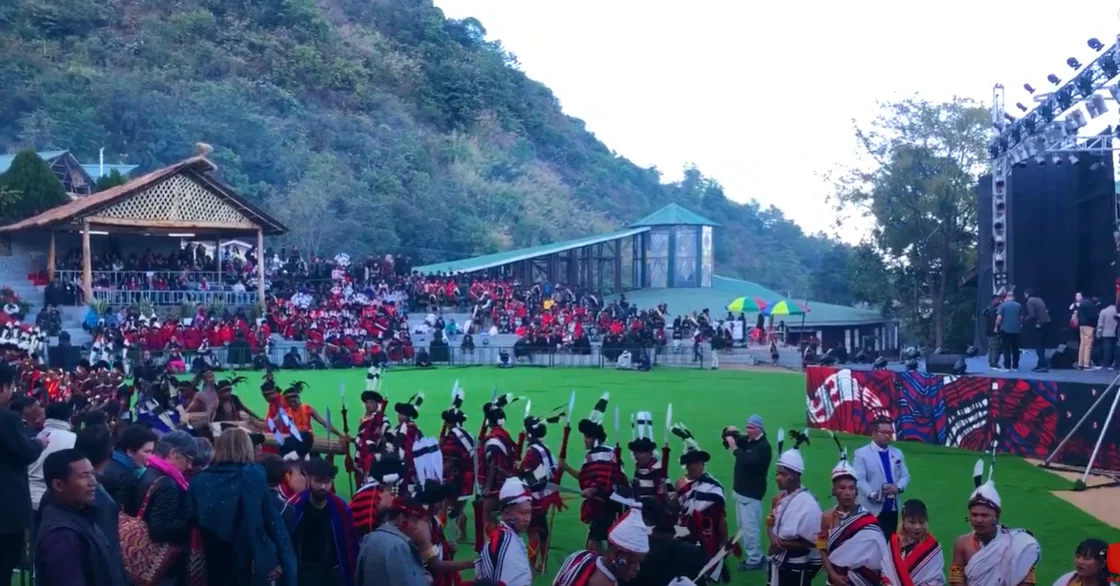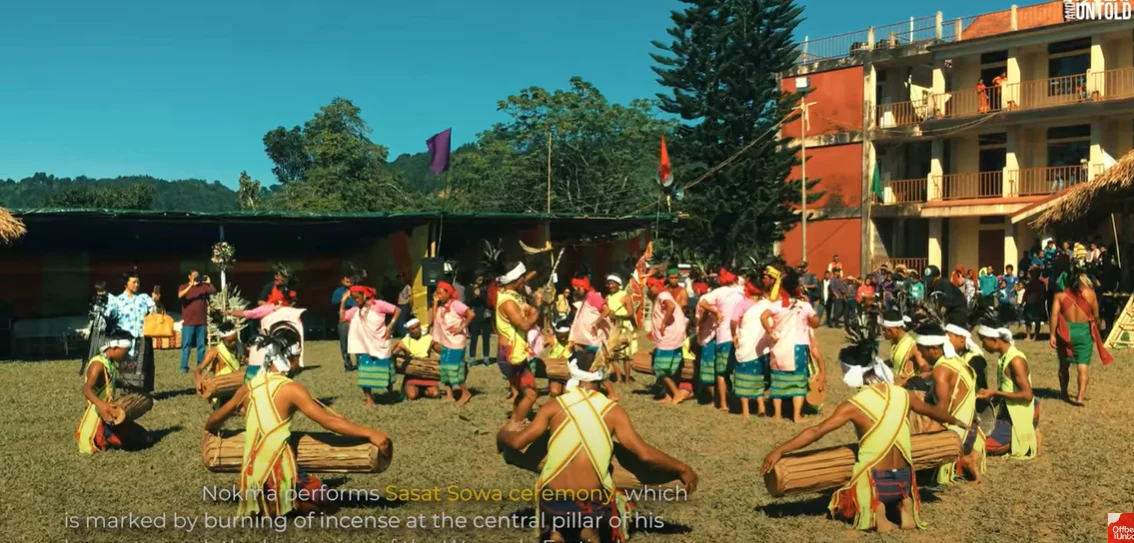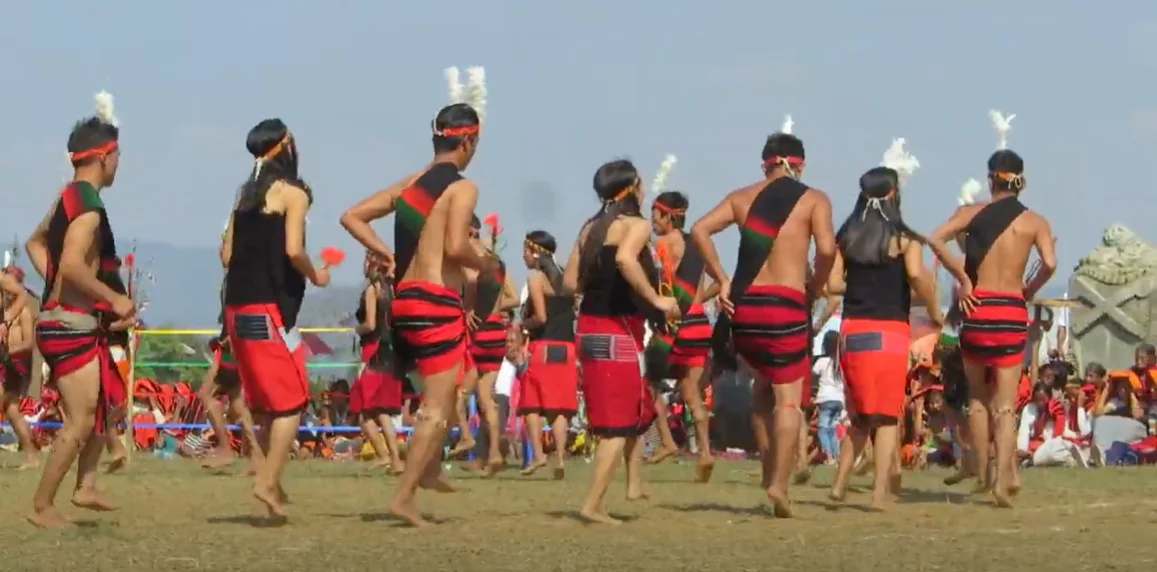North East India, a land of mesmerizing beauty and vibrant cultures, is a tapestry woven with diverse traditions and pulsating festivals. From the heart-thumping drumbeats of Nagaland to the serene prayers offered during the Ambubachi Mela in Assam, every celebration here reflects the unique spirit of the region. Move on a mesmerizing exploration of 10 of the most famous festivals in North East India, each offering a glimpse into the rich heritage and vibrant spirit of the North Eastern states.
-
Bihu (Assam): A Celebration of Life’s Rhythms

- Significance: Bihu, the most prominent festival of Assam, is a three-part celebration marking the agricultural cycle.
- Celebrations:
- Bohag Bihu (April): Welcomes the Assamese New Year with feasting, prayers, and vibrant folk dances like Bihu Naach.
- Kati Bihu (October): A time for thanksgiving after the sowing of seeds, marked by community meals and prayers for a bountiful harvest.
- Bhogali Bihu (January): Celebrates the harvesting season with bonfire lighting, feasting, and traditional games like buffalo fights (non-violent ceremonial display).
-
Hornbill Festival (Nagaland): A Window into Naga Culture

- Significance: This ten-day extravaganza held in Kohima, Nagaland, is a vibrant celebration of Naga heritage.
- Celebrations:
- Traditional dances and music: Witness the captivating performances of various Naga tribes, showcasing their rich cultural tapestry.
- Indigenous games and sports: Be mesmerized by displays of strength and agility in archery, wrestling, and log dragging competitions.
- Food festivals: Savor the unique flavors of Naga cuisine, with delicacies like smoked meat and fermented bamboo shoots.
- Arts and crafts exhibition: Immerse yourself in the vibrant display of Naga handlooms, handicrafts, and artworks.
-
Wangala Festival (Meghalaya): A Harvest Festival Steeped in Tradition

- Significance: Celebrated by the Garo tribe of Meghalaya, Wangala is a thanksgiving festival for a bountiful harvest.
- Celebrations:
- Exchange of gifts: The festival revolves around the ceremonial exchange of “Wangala”, intricately woven baskets filled with rice, meat, and local produce.
- Traditional dances: Witness the energetic performance of the “Dance of Hundred Drums” and the graceful movements of the “Ronggeng Dance.”
- Feasting and merrymaking: Communities come together for grand feasts featuring local delicacies and traditional rice beer.
-
Nongkrem Dance Festival (Meghalaya): A Celebration of Ancestral Spirits
- Significance: Held annually at Nongkrem village in Meghalaya, this festival honors the spirits of ancestors and prays for prosperity.
- Celebrations:
- Sacrificial rituals: Animals are sacrificed to appease the spirits and seek blessings for a prosperous year.
- Traditional dances: Witness the “Archer’s Dance,” depicting warriors returning from victory, and the “Dance of the Leh” (spirits).
- Feasting and community gathering: Families come together for a grand feast, strengthening social bonds.
-
Ziro Festival of Music (Arunachal Pradesh): A Fusion of Nature and Music
- Significance: Nestled amidst the breathtaking scenery of Ziro Valley, this festival celebrates independent music and local artists.
- Celebrations:
- Live music performances: Enjoy a diverse range of musical genres, from rock and indie to folk and electronica, by both established and emerging artists.
- Camping under the stars: Immerse yourself in the serene beauty of the valley while enjoying music under the night sky.
- Local food stalls: Savor the flavors of Arunachal Pradesh with a variety of regional delicacies.
-
Dree Festival (Arunachal Pradesh): A Thanksgiving for the Land
- Significance: The Apatani tribe in Arunachal Pradesh celebrates Dree as a thanksgiving festival for a successful harvest and to appease the gods.
- Celebrations:
- Ritualistic offerings: Villagers offer rice beer, meat, and other agricultural produce to the gods, seeking blessings for future harvests.
- Traditional dances and songs: Witness the vibrant performances of the Apatani community, showcasing their rich cultural heritage.
- Feasting and community gatherings: Families gather for a celebratory meal, strengthening social bonds.
-
Moatsu Mong (Nagaland): A Festival of Seed Sowing and Community Spirit

- Significance: Celebrated by the Ao tribe of Nagaland, Moatsu Mong marks the beginning of the sowing season and a time for relaxation and merriment after a period of strenuous agricultural work.
- Celebrations:
- Feasting and merrymaking: Communities come together for grand feasts featuring traditional Ao dishes like pork curries, fermented bamboo shoots, and rice beer.
- Folk songs and dances: The festival is a vibrant display of Ao culture, with energetic performances of songs and dances accompanied by traditional instruments like the “lunge” (flute) and the “lengter” (drum).
- Social gatherings and strengthening bonds: Moatsu Mong fosters a sense of community spirit as families and friends gather to celebrate, share stories, and strengthen social bonds.
- Warrior dances and displays of strength: The festival may also include displays of strength and agility through traditional warrior dances, showcasing the pride and heritage of the Ao tribe.
-
Cheraw Dance Festival (Mizoram): A Celebration of Martial Arts and Valor
- Significance: Held annually in Mizoram, the Cheraw Dance Festival honors the bravery and martial prowess of the Mizo warriors.
- Celebrations:
- Traditional martial arts performances: Witness the “Cheraw” dance, a captivating display of Mizo martial arts techniques and weaponry.
- Colorful costumes and headgear: Dancers adorn themselves in vibrant attire and headgear embellished with feathers and beads.
- Music and war cries: The energetic performance is accompanied by the rhythmic beats of drums and the powerful war cries of the Mizo warriors.
- Celebratory spirit and cultural pride: The festival is a vibrant expression of Mizo culture and a celebration of their rich martial arts tradition.
-
Ambubachi Mela (Assam): A Unique Festival Honoring the Goddess Shakti
- Significance: The Ambubachi Mela, held at the Kamakhya Temple in Assam, is a unique festival honoring the menstrual cycle of the Goddess Shakti.
- Celebrations:
- Temple closure: The Kamakhya Temple remains closed for three days, symbolizing the menstruation period of the Goddess.
- Ritualistic offerings: Devotees offer prayers and symbolic offerings outside the temple during the closure period.
- Reopening of the temple and rituals: Upon reopening, the temple witnesses a surge of devotees seeking blessings from the Goddess.
- A celebration of womanhood and nature: Despite its unconventional nature, the festival celebrates the power of femininity and the cyclical nature of life.
-
Gangaur Festival (Tripura): A Colorful Celebration of Spring and Marriage
- Significance: Observed in Tripura, the Gangaur festival celebrates the arrival of spring and the union of Shiva and Parvati.
- Celebrations:
- Processions with colorful idols: Decorated chariots carrying clay idols of Goddess Gauri and Lord Shiva parade through the streets.
- Singing and dancing: Devotees participate in vibrant processions, singing devotional songs and performing traditional dances.
- Offerings to the deities: Prayers and offerings are made to seek blessings for a bountiful harvest and marital bliss.
- A vibrant expression of faith and cultural heritage: The festival is a joyous celebration of spring, love, and the blessings of the divine couple.
This is just the beginning of your exploration of the captivating festivals of North East India. Each celebration offers a unique opportunity to immerse yourself in the rich tapestry of traditions, vibrant customs, and the warm hospitality of the region.
So, pack your bags, enjoy the spirit of adventure, and move on a journey to experience the magic of these incredible festivals firsthand.


